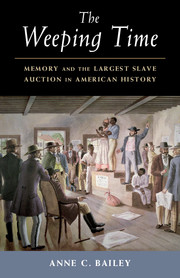A Note on Sources and Bibliography
Published online by Cambridge University Press: 06 October 2017
- Type
- Chapter
- Information
- The Weeping TimeMemory and the Largest Slave Auction in American History, pp. 179 - 180Publisher: Cambridge University PressPrint publication year: 2017



